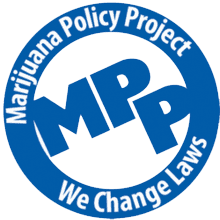Condition Report: Epilepsy
September 9, 2019In 2017, the National Academies of Science, Engineering & Medicine released a comprehensive report, “The Health Effects of Cannabis & Cannabinoids”, based on the research that had been done to date. Following that valuable report, we’ve been providing weekly Condition Reports on 2018 research for each of the conditions cited in that report, such as chronic pain, cancer, anorexia, and more – these reports seek to provide evidence for both medical benefits and risks for each condition.
Because prohibitive cannabis regulations have, for years, limited the amount of available information, we believe it is important to educate the public about up-to-date research. Although medical cannabis usage is still both controversial and inconclusive, the World Health Organization has urged for nations to remove cannabis from Schedule IV from their list of drug scheduling, which would allow the protection for researchers to conduct more comprehensive studies.
Canneconomy.com and its affiliates aim to provide general information about cannabis consumption in the hopes for policymakers, users, researchers, and the general public to make informed decisions about cannabis and its derived products. In order to do this properly, we must seek and report the best available research for a better understanding of cannabis as it takes on the medical field.
THERAPEUTIC FINDINGS: EPILEPSY
For patients and their families, refractory epilepsy (RE) in children is a significant burden. Approximately one-third of epilepsy patients have antiepileptic-resistant seizures (Zaheer, Kumar, Khan, Giyanwani, and Kiran, 2018). Clinical trials for the therapy of medically refractive epilepsy have concentrated mainly on new medications and result in a substantial number of people whose seizures stay medicinally refractive. The off-label use of sativa cannabis in the treatment of seizures has been known since ancient times. The plant’s active components THC and cannabidiol are deemed safer and more efficient in the treatment of seizures and have lower psychotropic impacts (Zaheer et al., 2018).
A study conducted at the University Children’s Hospital Ljubljana in Slovenia has suggested cannabidiol (CBD) as potential use of treatment for RE (Neubauer, Benedik and Osredkar, 2018). This claim was evaluated by reducing the burden of seizure and the presence of side effects. In some children, serial electroencephalography was performed. In the analysis, 66 patients were included, and 32 patients had an improvement in the seizure burden of more than 50 percent, 14 of whom became seizure-free. None of the patients reported seizure frequency worsening, but in 15 patients, CBD had not affected. Some patients reported less vigorous seizures, shorter seizure duration, shorter recovery time, and other positive CBD treatment side effects, thus, CBD has been found to have potential benefits, mainly by reducing the burden of seizures (Neubauer et al., 2018).
Another observational study supported CBD’s effectiveness in RE by treating 57 patients with epilepsy of various etiologies (age 1-20 years old) for three months with CBD (Hausman-Kedem, Menascu and Kramur, 2018). Twenty-six patients had an average monthly seizure frequency reduction of about 50 percent. Among various epilepsy etiologies, there was no statistically significant difference in response rate, and a better response to treatment was associated with a younger age at the start of treatment (< 10 years) at a higher dose of CBD. However, 46% of patients reported adverse reactions and were the main reason for the cessation of treatment. Hausman-Kedem et al. (2018) concluded that to evaluate CBD actual effectiveness, randomized controlled trials are necessary.







